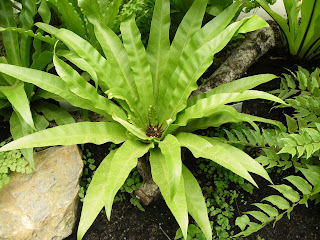Today we will discover 10 plants that look good in the garden all year round.
A good garden looks good all year round, not just in spring or summer.
Most plants, such as roses, are at their peak during one season. But choose carefully and you’ll find a range of plants that offer more than one season of interest – not only flowers but autumn leaf colour and colourful berries, too, as well as an architectural form.
Of course, your year round stars will need some support from other plants – discover 12 plants for colour in every month
Cercis canadensis ‘Forest Pansy’
Cercis canadensis ‘Forest Pansy’ bears pinky-violet coloured blossom on bare stems in spring, followed by beautiful, dark purple heart-shaped leaves in summer. In autumn, they turn yellow before falling. Many are multi-stemmed, so you can enjoy the shape of the plant during the winter months..
Crab apples
A crab apple, such as Malus x robusta ‘Red Sentinel’ can be fitted into even the smallest of gardens and has terrific wildlife value as well as ornamental appeal. In spring, the tree is laden with pink or white blossom, depending on the variety. In summer, beautiful crab apples cling to the tree. In autumn, the leaves turn a spectacular colour before falling.
Amelanchier lamarckii
Another great tree for a small garden, Amelanchier lamarckii bears small, white star-shaped flowers in spring, followed by black berries in summer and beautiful leaf colour in autumn.
Viburnum plicatum f. tomentosum ‘Dart’s Red Robin’
This tiered shrub has white lacecap flowers in spring and summer, and attractive, crinkled foliage. The flowers are followed by red berries in summer, and beautiful changing foliage in autumn.
Blueberries
Blueberries not only taste great – they look great, too, for much of the year. In late spring, the plants are smothered in white, bell-shaped flowers, and are then covered in their blue fruits. The leaves turn fiery shades in autumn.
Hydrangea quercifolia
Hydrangea quercifolia (oak-leafed hydrangea) has extremely long-lasting, cone shaped flowers from midsummer well into autumn – they change colour (often from white to pink) as the season progresses. In autumn, their oak-shaped leaves turn a bronze, orange and reddish-purple before falling.
Witch hazel
Witch hazel (hamamelis), such as Hamamelis x intermedia ‘Aphrodite’ have scented flowers in late winter and early spring, when little else is in flower. In autumn, their leaves turn an intense red before falling.
Cornus alba ‘Sibirica’
Cornus alba ‘Sibirica’ is grown for its bright red winter stems, which light up the garden in winter. But it looks good at other times of the year, too – it has variegated leaves that turn red in autumn, small white flowers in early summer and small, white berries to offer the garden too.
Fruit trees
Apples and pear trees are great all-rounders in the garden. They produce beautiful blossom in spring, followed by pretty fruits in summer and changing leaf colours in autumn. If you’re short on space, grow them as espaliers or step-overs and underplant with early spring bulbs such as crocus or narcissus.
Viburnum opulus
Viburnum opulus has white, lacecap flowers in late spring and early summer, followed by clusters of red berries in autumn. The leaves turn beautiful shades of red before falling in autumn.























































































